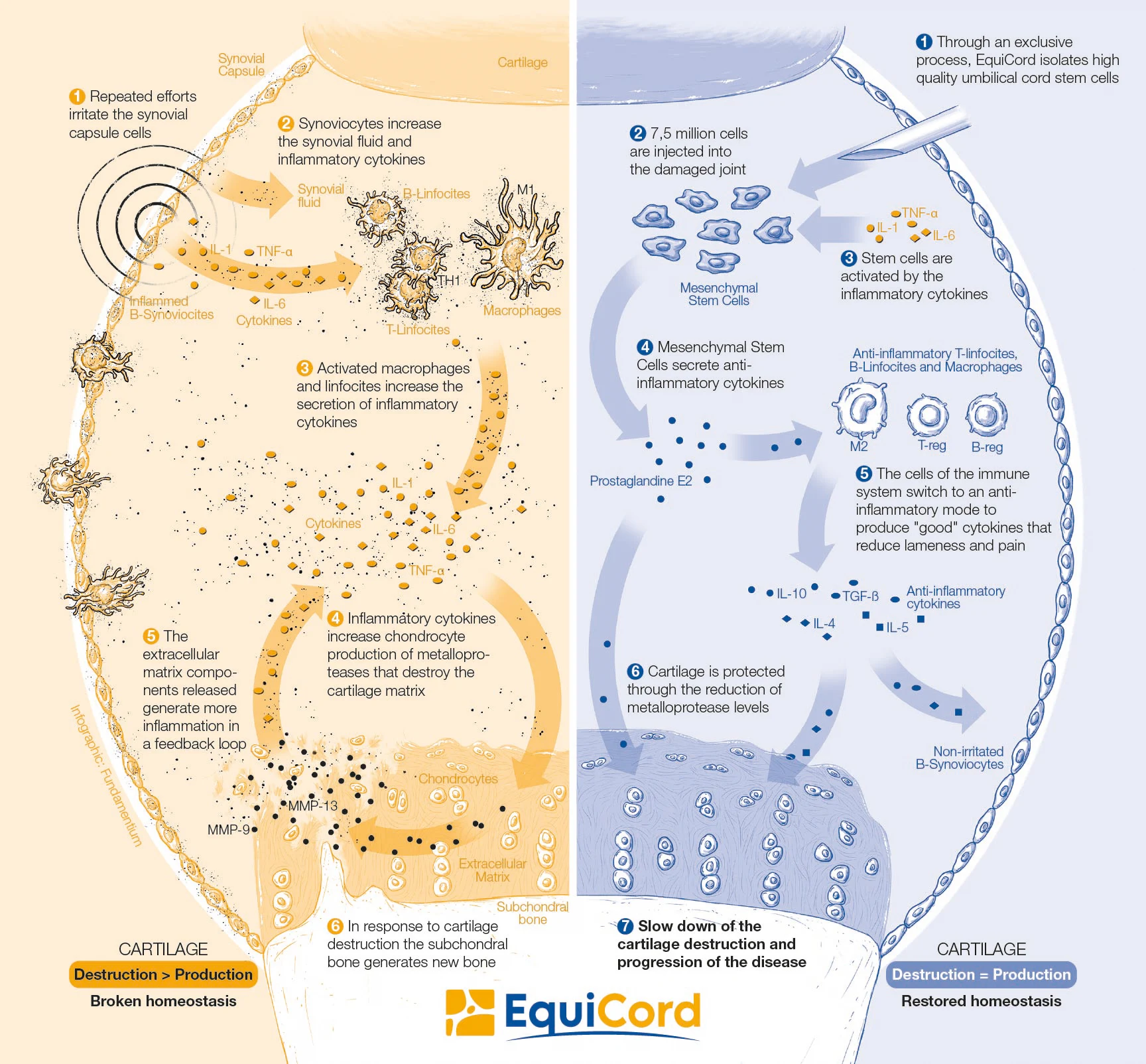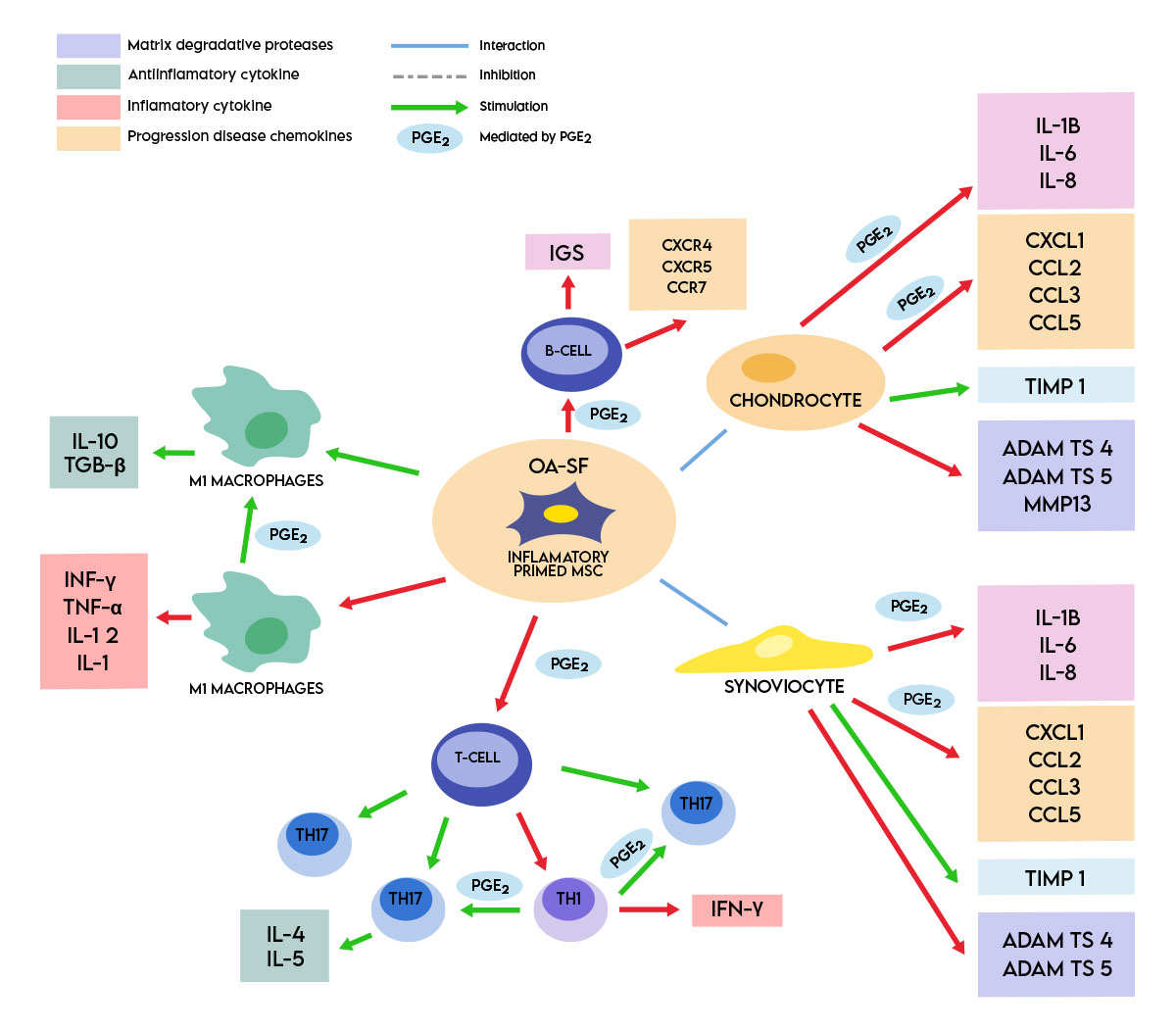Mesenchymal Stem Cells
Once injected into the animal, the cells are activated by the inflammatory environment present in the damaged tissues. After their activation, the cells secrete various cytokines that trigger an anti-inflammatory cascade that improves the clinical symptoms of the animal and promotes tissue regeneration
What are Mesenchymal Stem Cells?
Mesenchymal stem cells are multipotential cells with the ability to differentiate into various tissues such as osteocytes (bone cells) and chondrocytes (cartilage cells).
Mesenchymal stem cells are present in a multitude of tissues such as adipose tissue, bone marrow, umbilical cord, etc. Mesenchymal cells are responsible for the repair and regeneration of tissues in the body.
Thanks to biotechnology, these cells can be isolated and cultured in vitro in order to be used in other patients as regenerative medicine treatments.
Umbilical cord use advantages
Non-invasive extraction
100% animal welfare
Efficiency in cell isolation
The number of mesenchymal stem cells that can be obtained from invasive sources is very limited. Only between 0.001% and 0.01% of mononuclear cells are considered MSC after the extraction of peripheral blood or bone marrow, while you can only find 5,000 cells for each gram of adipose tissue. In contrast, the number of cells in umbilical cord tissue (Wharton's jelly) is 50,000 per centimeter. In addition to the higher number of cells per gram of tissue, umbilical cord MSCs have a higher proliferation capacity compared to other tissue sources (Kalaszcynska et al., 2015). This makes the manufacturing more efficient.
Immunoprivileged status
The ability to modulate immunological responses rank umbilical cord MSCs as an important compatible stem cell type for therapeutic applications in an allogeneic setting. The mechanisms of immune privilege are still being investigated; however, low MHC-I level and absence of MHC-II expression protect them from NK-mediated lysis.
In addition, recent studies in horses demonstrate that in MSCs from conventional sources (Bone Marrow) a great heterogeneity in the expression of MHC-II surface markers exists (range 0–98% positive) (Schnabel, 2013). In addition, a study from the same author (Schanabel et al., 2014) showed that the incidence of positiveness of MHC-II in bone marrow samples is about 85%. However, in our experience in more than 100 donors of Umbilical Cord MSC that has been characterised, all of them were strongly negative to MHC-II (<1%)
Low population doubling
Thanks to working with a tissue as rich in stem cells as the umbilical cord and the large anatomical size of an equine umbilical cord (~1kg), the number of stem cells obtained from a single umbilical cord is extremely higher than the one obtained from other sources. This higher number of cells in pass zero (P0) allows the expansion of the cells efficiently without the need to increase the cellular duplications in excess. It is well known that as the cells are duplicated in culture, they lose differentiation capacity, immunomodulation and therapeutic actions (Crisostomo et al., 2006).
Safety
Mechanism of action of MSCs
The mechanism of action (MoA) of mesenchymal stem cells is complex, multifactorial and not fully understood. Initially it was thought that its efficacy lay in its inherent capacity for differentiation and adhesion to tissues, however, it is now known that this capacity in vivo is very limited.
Today it has been determined that the mechanism of action of MSCs is based mainly on the paracrine capacity and on the secretion of immunomodulatory factors that act on cells and tissues, generating an anti-inflammatory and regenerating environment.
Once injected into the animal, the cells are activated by the inflammatory environment present in the damaged tissues. After their activation, the cells secrete various cytokines that trigger an anti-inflammatory cascade that improves the clinical symptoms of the animal and promotes tissue regeneration
At EquiCord we have conducted in vitro studies demonstrating the immunomodulatory capabilities of EUC-MSCs. This ability gives it a great local anti-inflammatory effect, which translates into a significant reduction in lameness and pain.


